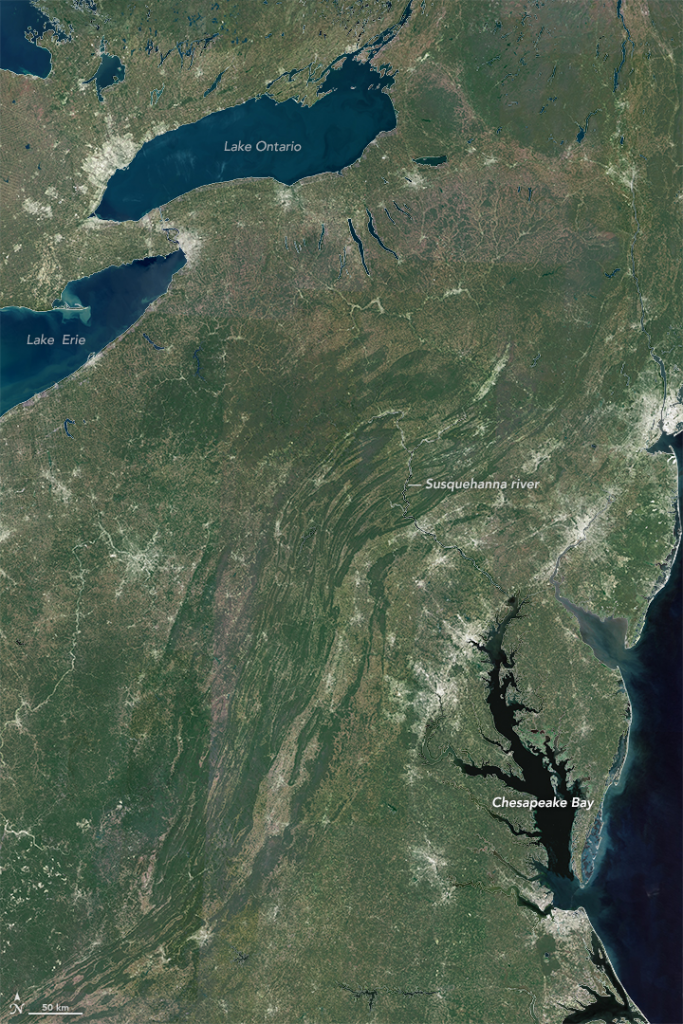

A satellite series named Landsat has been doing exactly that. As a NASA scientist, I’ve been using Landsat 8 (the current satellite) data for a long time. Yet it’s still amazing to create images of salt reflecting a brilliant white in a natural color scene, or seeing it turn a beautiful cyan using an infrared perspective. With the right tools I can discern patterns in the salt or make visible the phytoplankton dancing on the blue ocean. I’ve observed cities grow, forests recover from fire, islands form, and more. Our world is constantly changing.
When sunlight hits the Earth’s surface, it is absorbed, reflected, or scattered, resulting in different wavelengths of light leaving the Earth. Landsat 8 measures the visible and infrared wavelengths in 30-meter pixels and in order to “see” the image, we assign particular colors to different wavelengths.
Recently, I was asked to create a Landsat mosaic of the entire Chesapeake Bay watershed. I’ve created Landsat mosaics using twelve Landsat scenes, but this mosaic would dwarf them all at well over forty! Creating even a small mosaic is difficult depending on the day or season the image was acquired, cloud cover, projections and satellite age (i.e., whether the data is from one of the newer or older Landsat satellite.) To minimizes these impacts, projects such as the Global Land Survey selects the best cloud-free images from Landsat satellites to generate a completely cloud-free scene every five years.
So when asked how long this would take I responded, “a few months and I’ll need a much better computer!” I began creating a composite of the Landsat scene, adjusting settings and matching colors to create the most natural and detailed image possible. I softened borders of the scene using the erase tool and began to see individual scenes flow into the next as boundaries disappeared. Due to the image size we tapped our friends over at the U.S. Geological Survey WELD project (Web-enabled Landsat Data) to help create a mosaic. But while the land images flowed seamlessly the water had many artifacts, discolorations and clouds that unnaturally ended at the edges of the water bodies.
The last thing I wanted was the water to look unnatural — the Bay was the focus of the mosaic! And so began my arduous task of masking these imperfections (often zooming so far in that I had only a few pixels on my screen.) After this, I layered a true color USGS image of the Bay and Eastern Shore onto my mosaic and used another mask to crop out the water. Where they didn’t align, I matched up the water layers as best I could with my WELD mosaic. I played around with color vibrancy and contrast using an Adobe product called “Lightroom” which boosted the greens, reds and contrast to reflect a color closer to leaves for the land.
After a month of hard work, it was finally time to print and do a final check! This is the largest single image I’ve worked on to date, and while I always spot something I can improve, I couldn’t be more proud. Knowing scientists and non-scientists will appreciate this image is one of the most rewarding aspects of my work.






